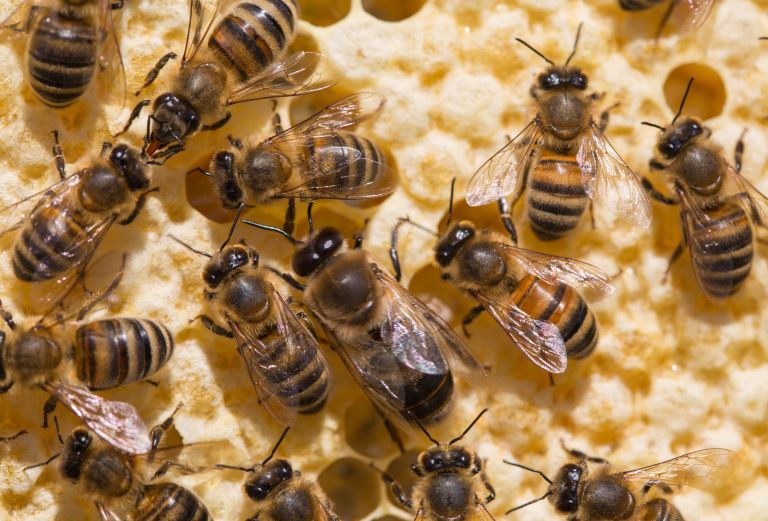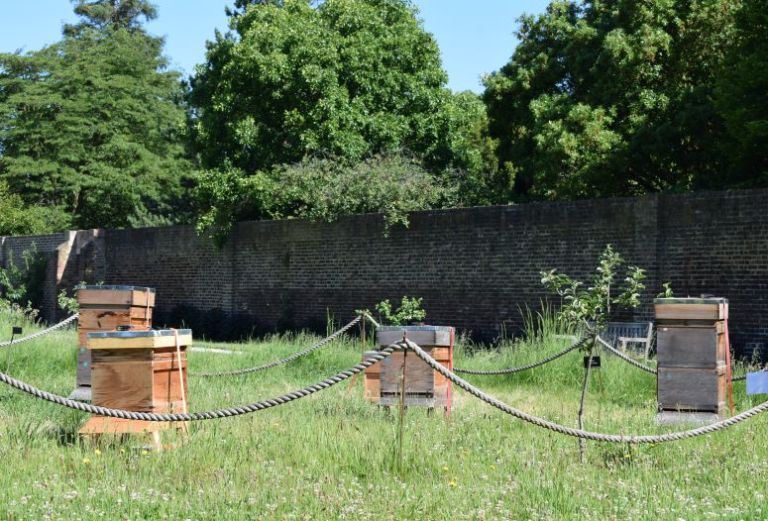
By Sarah Nicholl-Carne, bee keeping volunteer
Beekeeping is always interesting and we are constantly learning. The bees keep us on our toes, behaving in unexpected (exasperating) ways. But more than anything, caring for bees is sticky.
Bees cannot bear any gaps or spaces in their hive, and when they find one, they fill it with wax. The worker bees make wax from the sugar in honey, which they convert into beeswax in a special gland in their abdomen. They are prolific, and in no time they will have glued everything together. We then come in and prise it all apart, so we can inspect the hive and make sure the bees are healthy and being well behaved. We scrape up the spare wax and squirrel it away for later.

When the Bishops of London lived at Fulham Palace they always kept bees; partly for honey, but mainly to provide a constant supply of beeswax for candles. In the days before electricity (only a hundred years ago) candles were crucial. If you could afford them, beeswax candles were the best. They don’t smoke, they burn for longer and they smell pleasant. The alternative, cheap tallow candles were smoky, smelly, quick burning affairs.
We gather wax throughout the year, but the majority comes from the honey harvest. Bees pack their honey into hexagonal cells on the frames, and cap each of them with wax to keep it secure. We scrape off the wax cappings to release the honey, and end up with a big pile of sticky, honey-coated wax. We heat it all up in a large glass bowl, suspended over boiling water, until it melts into a murky brown mess. When left to cool, miraculously, the wax forms a solid crust on top, with clear honey below. We don’t sell this honey because it has been heated, unlike our wonderful raw Fulham Palace honey. The honey you can purchase in supermarkets tends to be boiled which unfortunately removes most of the beneficial enzymes within the it, which is why the honey we make here is so special. We instead use the honey which we separate from wax in this way to make honey biscuits, which you’ll find on sale at apple day on Sunday 6 October.
The wax we collect during our honey harvest is combined with all the rest of the bits and bobs garnered during the year, and the beekeepers make original beeswax Christmas candles, which will soon be on sale in the Palace’s shop.
